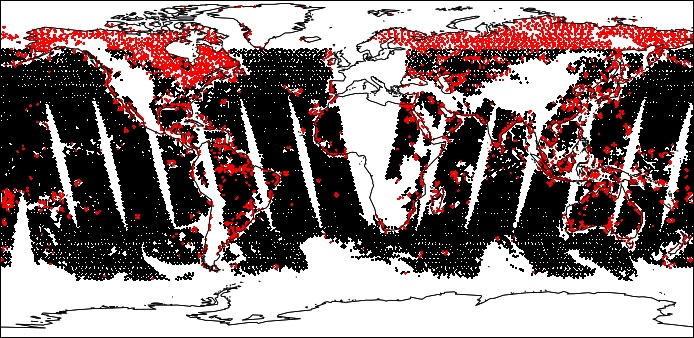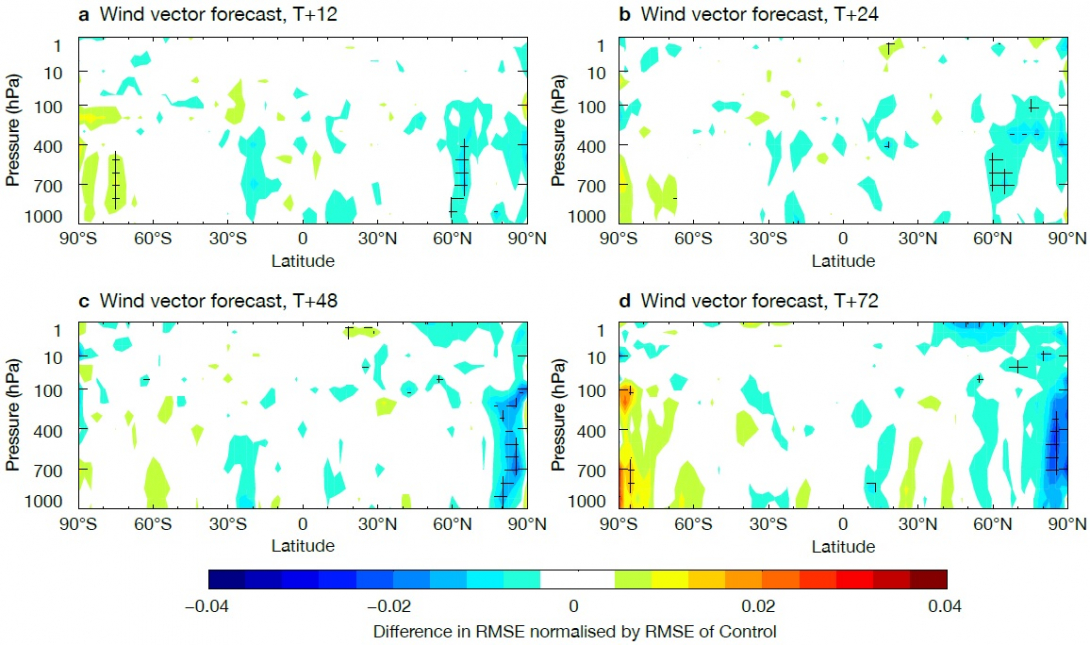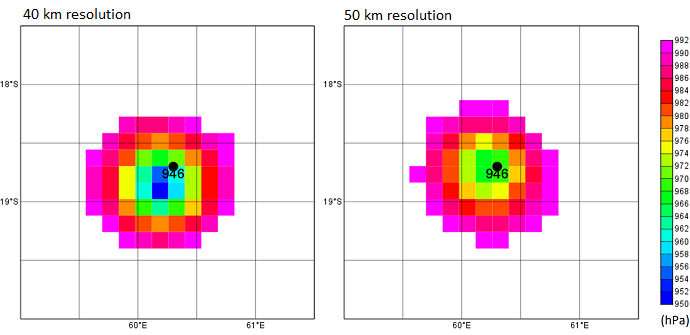

Cycle 48r1 of ECMWF’s Integrated Forecasting System (IFS), which is to become operational this summer, will include extensive changes to the way the initial conditions of weather forecasts are established.
The new cycle will make better ’all-surface’ use of satellite microwave observations. The data obtained will be added to the many weather observations that help us to establish the initial conditions of weather forecasts through data assimilation. The upgrade represents a significant improvement in the use of satellite observations at ECMWF.
Other changes to the data assimilation system to be implemented in Cycle 48r1 include an increase in the resolution of the 4D-Var system used for the atmosphere, and a move to a new software layer called OOPS (Object-Oriented Prediction System).
‘All-surface’ satellite observations
The upgrade targets surface-sensitive microwave channels, for which a lot of data has previously been screened out due to surface types that are hard to simulate.
These surface types include land, snow, sea-ice, and mixtures of all surface types. In some channels, the new developments increase the number of observations being assimilated by around 30%.

Wider use of satellite observations (1). The chart shows the coverage of observations to be assimilated in Cycle 48r1 from the Advanced Microwave Scanning Radiometer – 2 (AMSR2) in channel 11, with black dots indicating data assimilated in Cycle 47r3 and red dots the data added in Cycle 48r1. Data are for the 00 UTC cycle on 20 June 2019.
An example of the wider use of satellite observations is shown in the image above. For microwave imager channels like the one shown in the figure, observations are used over most land surfaces for the first time.
“This is thanks to a new technique for extrapolating the surface radiative properties across frequencies, based on retrievals at lower frequencies that are less sensitive to cloud and precipitation,” says ECMWF scientist Alan Geer.
Observations from microwave imager channels are also added over ice-free polar oceans thanks to a new sea-ice retrieval. “This enables us to accurately screen out any observations that contain sea-ice, where previously we had to exclude all polar ocean areas as a precaution,” Alan says.
It is still too difficult to use observations in this channel over sea-ice, snow, desert or high-altitude surfaces, so some big gaps to fill remain.

Wider use of satellite observations (2).The chart shows the coverage of observations to be assimilated in Cycle 48r1 from the Microwave Humidity Sounder (MHS) channel 5 (183±7 GHz) from Metop-B, with black dots indicating data assimilated in Cycle 47r3 and red dots the data added in Cycle 48r1. Data are for the 00 UTC cycle on 20 June 2019.
More changes in Cycle 48r1 can be seen in the image above. They show more observations over land at high latitudes in a microwave humidity channel. The improved treatment of mixed surfaces has also allowed coastal scenes to be used for the first time.
Additional changes, not illustrated here, include treating snow and sea-ice as Lambertian surfaces (appearing uniformly bright from all directions of view) rather than specular surfaces (incident light is reflected into a single outgoing direction) in the radiative transfer for some microwave sounding instruments. This leads to smaller biases and hence a better use of the data.
Better forecasts
The wider use of satellite observations in Cycle 48r1 will bring measurable improvements to forecasts. The main improvements are in northern high-latitude areas, showing the importance of trying to use more satellite data in these areas.
The image below shows the change in wind forecast error coming from the all-surface upgrade in Cycle 48r1. Blue areas indicate small but often significant improvements in forecasts over high northern latitudes.

Better forecasts with all-surface assimilation. Normalised change in root-mean-square error (RMSE), in an experiment with the all-surface assimilation changes to be included in Cycle 48r1 compared to a control, of wind vector forecasts (a) 12 hours ahead, (b) 24 hours ahead, (c) 48 hours ahead, and (d) 72 hours ahead, verified against own analysis, and based on approximately six months of experimentation. Cross-hatched regions are statistically significant at 95%. Blue areas indicate a reduction in forecast error and hence an improvement in forecast quality. Note that much of the yellow (forecast degradation) areas are below the surface, which is around 700 hPa at the South Pole. This is a result of doing the verification on fixed pressure levels, which are just extrapolations below the surface in some areas.
These results were based on the experiment’s analysis (the state of the Earth system determined by observations and previous forecasts) as the reference, but an observational reference confirms the improved forecasts.
More details on this upgrade can be found in a recent Newsletter article.
Resolution increase in 4D-Var and OOPS
In addition to including more satellite observations, Cycle 48r1 brings some other improvements in data assimilation.
One is an increase in the resolution of the 4D-Var data assimilation system by 20%, from about 50 km to about 40 km. This makes a big difference for particular phenomena, such as tropical cyclones. It is part of ongoing efforts to increase the resolution of the data assimilation system.

Better analyses of tropical cyclones. Using higher-resolution data assimilation, the core pressure of a tropical cyclone was analysed at 951 hPa, which is just 5 hPa higher than the observed value of 946 hPa. Using the lower resolution, a core pressure of 967 hPa was indicated, 21 hPa above the observed value. Over a four-month period, 11 tropical cyclones were studied in detail. In six of them, the core pressure was closer to the observed core pressure when the data assimilation resolution of Cycle 48r1 was used. There was no significant difference in the other five.
Finally, a new software layer that controls the execution of the data assimilation system will be used in Cycle 48r1. This layer, called OOPS, orchestrates and manages the execution of lower level tasks.
OOPS is written in C++ instead of Fortran and makes it easier to maintain and develop the data assimilation environment.
“These changes make Cycle 48r1 a significant step in improving the data assimilation system at ECMWF,” says the Head of Earth System Assimilation, Tony McNally. “They also lead the way to exciting new developments over the next few years to further enhance our ability to exploit observations and improve forecasts."
